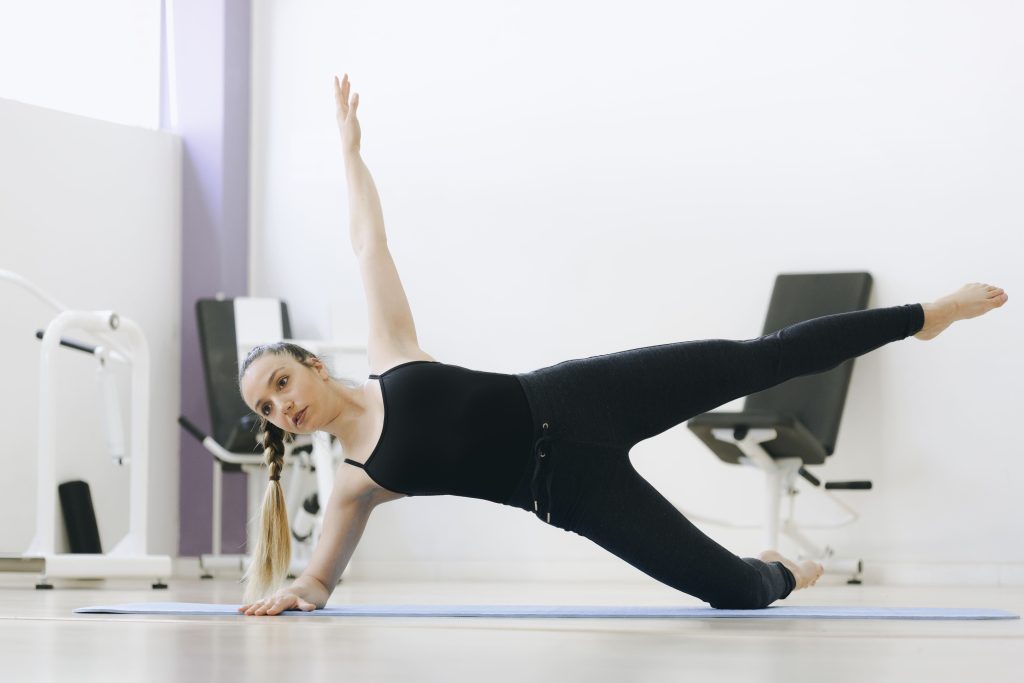20 de May de 2025
Dynamic Stability Exercises: Exercise Guide, Tips and Benefits
Dynamic stability exercises are a critical component of athletic training and injury prevention. These movements challenge the body to maintain balance and control during motion, integrating strength, mobility, and coordination. By targeting the core, hips, and stabilizer muscles, dynamic stability work enhances movement quality, performance, and overall resilience.
What Are Dynamic Stability Exercises?
Dynamic stability exercises involve controlled movements that require you to stabilize joints—especially the spine, hips, knees, and shoulders—while in motion. Unlike static holds, these exercises test your ability to resist unwanted movement while performing lunges, jumps, rotations, or loaded transitions. They’re widely used in strength and conditioning programs to improve athletic performance, correct imbalances, and prevent injury.

How to Do Dynamic Stability Exercises Properly
- Focus on control over speed: These exercises demand precision, so perform them with intent.
- Start with low load: Use bodyweight or light resistance to build foundational control.
- Engage your core: Always brace your trunk to protect your spine.
- Progress gradually: Increase difficulty by adding load, instability, or movement complexity.
- Use unilateral patterns: Single-leg or single-arm moves enhance asymmetrical control.
Tip: Film yourself or work with a coach to ensure proper joint alignment and movement patterns.
Muscles Worked by Dynamic Stability Exercises
Dynamic stability movements engage multiple muscle groups, with an emphasis on:
- Core (transverse abdominis, obliques, rectus abdominis): For spinal control and anti-rotation.
- Gluteus medius and maximus: Key for hip and knee alignment.
- Hamstrings and quadriceps: Support knee stability.
- Shoulder stabilizers (rotator cuff, traps, serratus anterior): For upper-body control.
Benefits of Dynamic Stability Exercises
- Injury Prevention: Enhances joint stability under movement, reducing risk of strains or sprains.
- Improved Athletic Performance: Builds reactive strength and balance in sport-specific actions.
- Core and Hip Control: Strengthens deep stabilizing muscles essential for posture and motion.
- Enhanced Movement Efficiency: Encourages proper muscle firing and reduces energy leaks.
- Fatigue Management: Low-load dynamic drills can reduce fatigue during high-stress training blocks.
Common Mistakes to Avoid
- Going Too Fast: Control should be prioritized over momentum.
- Poor Alignment: Keep knees, hips, and shoulders aligned throughout the movement.
- Ignoring Breathing: Breathe through effort to maintain trunk control.
- Overloading Too Soon: Stability must come before added resistance or instability.
Variations of Dynamic Stability Exercises
- Single-Leg Romanian Deadlift (RDL): Builds posterior chain control and balance.
- Lateral Bounds with Stick: Explosive lateral hops with a landing pause.
- Rotational Med Ball Throws: Integrates core power with postural control.
- Plank to Reach or Pull: Combines core engagement with shifting support.
- Walking Lunge with Overhead Carry: Challenges coordination and core alignment.

How to Include Dynamic Stability Exercises in Your S&C Workout
Incorporate 2–3 dynamic stability movements at the start of your session as activation drills or in accessory blocks to reinforce technique. Use 2–4 sets of 6–10 reps or 20–30 seconds per side. These drills pair well with compound lifts or speed work and are excellent during recovery or fatigue management phases for movement refinement without overload.
FAQs About Dynamic Stability Exercises
What is a dynamic stability exercise?
It’s a movement that challenges your ability to stay balanced and aligned while in motion—like lunges, single-leg deadlifts, or core rotations.
What are the big 3 core stability exercises?
Planks (anti-extension), side planks (anti-lateral flexion), and bird-dogs (anti-rotation) form the foundation of core stability.
What is the best exercise for stability?
There’s no single best, but single-leg RDLs, planks with reach, and Turkish get-ups are top choices for full-body stability.
How to improve dynamic stability?
Train unilaterally, slow down movements, integrate rotational control, and focus on core and hip alignment under load.
What are the 5 components of core stability?
They include strength, endurance, motor control, proprioception, and intra-abdominal pressure management.
Dynamic stability exercises are essential tools for building long-term performance and injury resilience. Whether you’re training for sport or functional fitness, including them in your strength and conditioning routine helps refine movement, manage fatigue, and elevate your body’s ability to perform under pressure.
